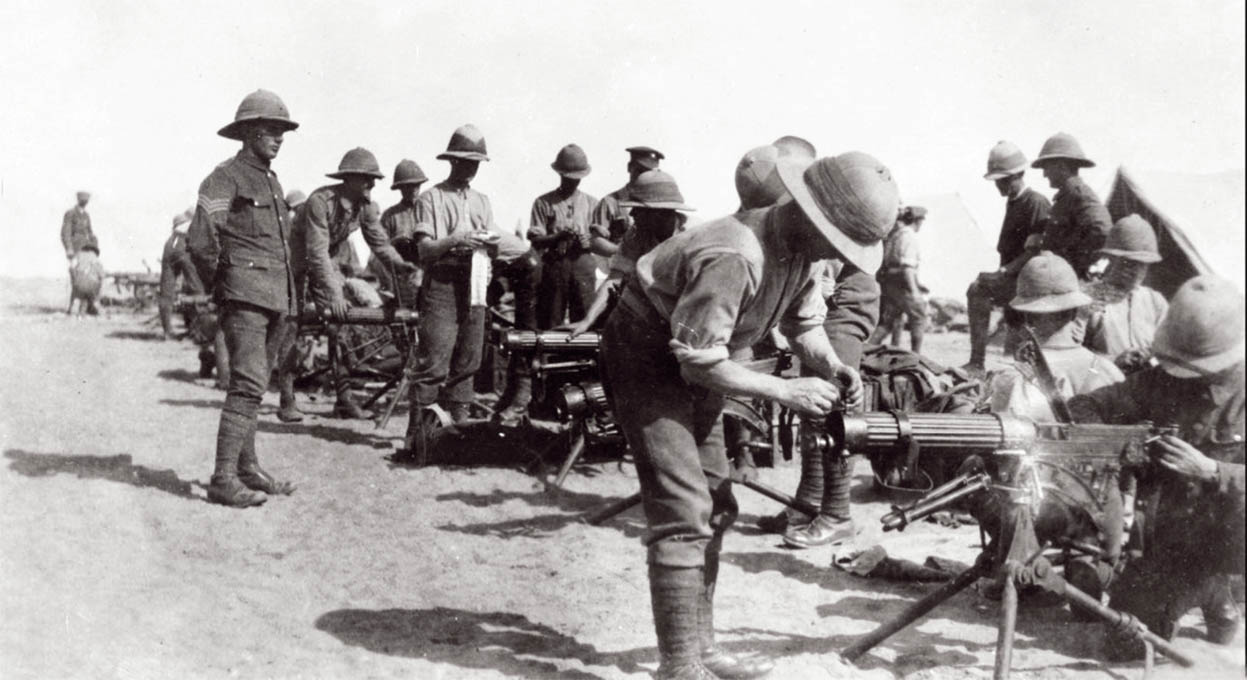William George Osborne, known to his family as George, was born on 22nd November 1880 in Bromeswell, Suffolk. On 4th September 1904, he married Lillie May Graystone and they moved to Chapel Lane in Woodbridge where they had four children. Lillie died in 1915 and it was as a single man, George was called up on 20th November 1916. With no wife to care for his children, they were sent to Valley Farm to be looked after by George’s father and sister Hannah.
George was posted to join the 5th (Territorial) Battalion, Suffolk Regiment who were serving in Egypt and, on 13th February 1917, he boarded the troopship Saxon at Devonport Dockyard and landed in Alexandria on the 1st March. On arrival in Egypt, the men underwent a period of training before joining the battalion.
George Osborne served with the Machine Gun Corps in Egypt seen here maintaining their Vickers Machine Guns. (IWM Q110751)
George was attached to the 163rd Machine Gun Company. After just twenty days with them, however, he was wounded, receiving shrapnel wounds to his legs, and admitted to the 2nd Australian Stationary Hospital in El Arish.
Although George returned to his battalion, he was diagnosed as having D.A.H. or “Disordered Action of the Heart” after another visit to the hospital he was recategorised as a B1 soldier. This meant he was not fit enough to serve on the front line but could carry out duties at the Garrison Camp, so he was transferred to the 21st Rifle Brigade. At the end of 1917, George was transferred once again, this time to the Royal Army Medical Corps at the 17th General Hospital in Alexandria.
When the war ended, George remained in Egypt until 22nd August 1919, when he boarded the SS Caledonia for the journey back home. He was finally demobilised on 19th October 1919.
In 1921, George married Ellen Quinton in Woodbridge and in 1939, they were living on Grundisburgh Road, Woodbridge, from where George was working as a gardener. He died in 1959.
For his war service, George received the British War and Victory Medals.
